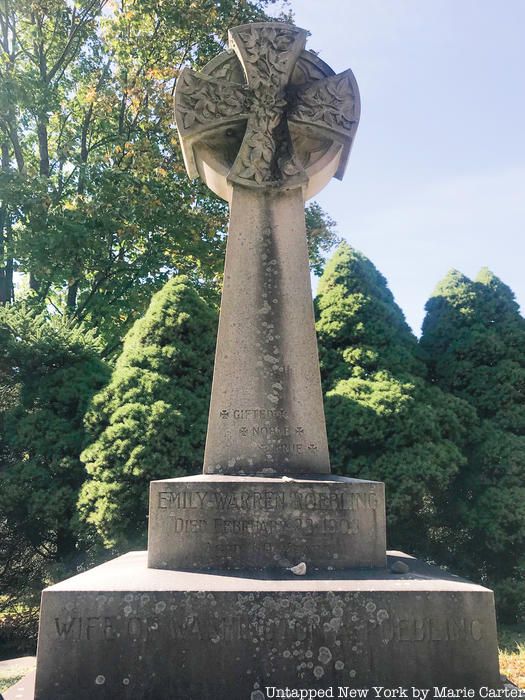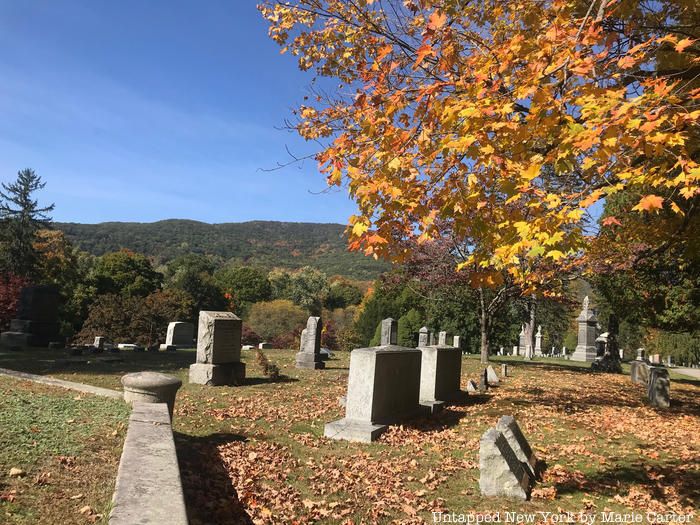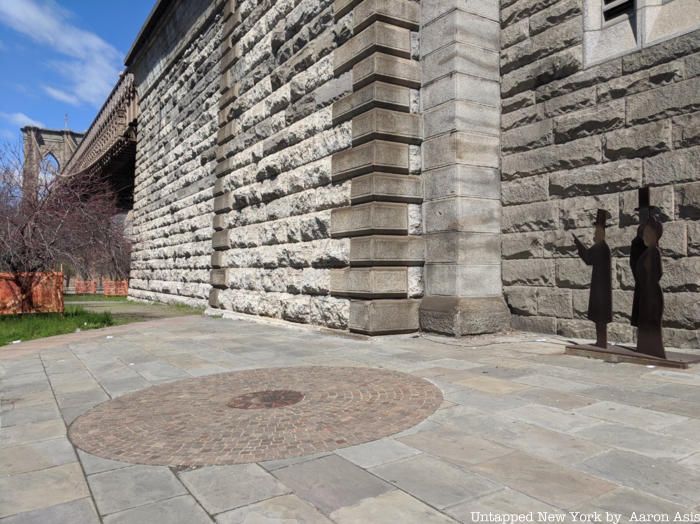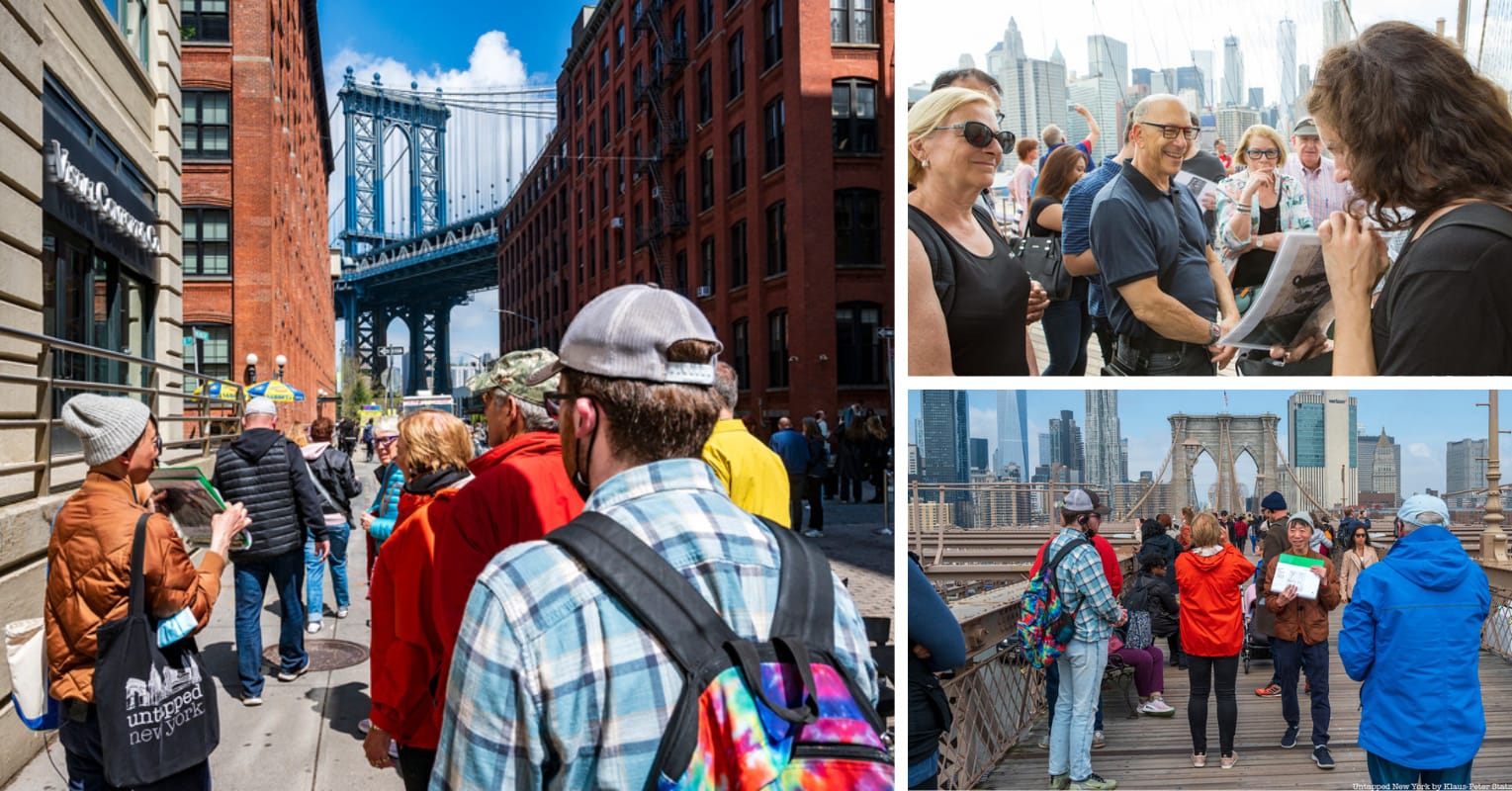Last-Minute NYC Holiday Gift Guide 🎁
We’ve created a holiday gift guide with presents for the intrepid New Yorker that should arrive just in time—


The misfortunes that befell the Roebling family while working on the Brooklyn Bridge’s design and construction have led some to believe that the family was cursed. From a freak accident and untimely death to illness and incapacity, the Roeblings bore the consequences of building a true modern marvel. The Roeblings’ sacrifices, however, were not in vain. Today, as the Roeblings rest peacefully in Cold Spring Cemetery in New York’s Hudson Valley and Riverview Cemetery in Trenton, New Jersey, the Brooklyn Bridge stands in New York City as an enduring testament to the family’s great talents and perseverance.

John Augustus Roebling was an innovative engineer and pioneer in suspension bridges. After studying in Berlin, Roebling emigrated to the United States where he began experimenting with wrought iron wire cables. He eventually founded his own cable factory in Trenton, New Jersey, and his son, Washington, joined the family business. That factory would continue to be family-owned for three generations, until the 1950s. In 1867, the New York Bridge Company accepted Roebling’s proposal for a 1,600-foot span across the East River, the longest bridge in the world at the time.
Unfortunately, John would not live to see his ambitious plans brought to life. While collecting measurements at a possible tower location near Fulton Ferry, his foot got stuck and crushed between a ferry and the dock. Doctors amputated some of his toes but Roebling refused any further medical care, opting instead to try a trendy water cure. This treatment did more harm than good. In 1869, just a few weeks after the accident, Roebling died of tetanus. He is buried in Riverview Cemetery in Trenton, New Jersey. Roebling’s son, Washington, stepped up as Chief Engineer to finish his father’s work on the bridge.

Like his father before him, Washington would not make it through the building of the bridge unscathed. When construction began in 1870, caissons had to be built. Caissons are watertight wooden structures that bring workers down to the bottom of the river where they can dig the bridge’s foundation out of solid rock in a dry underwater space. The caissons were unpleasant and often deadly. Their weight, wood structure, and use of pressurized air made them prone to explosions and fire. Workers also ran the risk of developing debilitating caissons disease.
Washington wrote of “that peculiar numb feeling in the small of the back and lower limbs which precedes paralysis” that he had often felt after spending hours in a caisson. Caissons disease, or “the bends,” occurs when a person rises too quickly from being underwater, experiencing rapid decompression as you ascend. After a particularly long day below water in 1872, Washington rose to the surface and promptly passed out. After this incident, he became incapacitated and unable to perform his duties at the construction site. Washington would suffer from the symptoms of caisson disease – paralysis, deafness, and partial blindness – for the rest of his life.

Washington convalesced in the home he shared with his wife, Emily Warren Roebling, at 110 Columbia Heights in Brooklyn. Using a telescope at his window, Washington could oversee the bridge’s construction from afar. Emily stood in for Washington at the site. He sent her with notes and instructions, and she taught herself the math and engineering needed to assist him. For sixteen years, construction hammered on until the bridge finally opened on May 24th, 1883. Emily is allegedly the only one of the three Roeblings to ever walk across the bridge’s span.
After the bridge was complete, John and Emily moved to Trenton, New Jersey. In 1924 poet Hart Crane moved into Washington’s room on Columbia Heights. Inspired by the views of Roebling’s majestic landmark, Crane penned his most famous work, The Bridge. He didn’t know how his own work intermingled so closely with the work of the room’s previous tenant. The corner of Columbia Heights and Orange Street, where the Roebling home once stood, was renamed for Emily Roebling in 2018.

Emily died of cancer in 1903, and Washington lived until 1926 when he died at the age of 89. Washington and Emily now rest in Cold Spring Cemetary in Emily’s hometown of Cold Spring in New York’s Putnam County, about an hour north of Manhattan by Metro-North train. Their graves are marked with embellished Celtic crosses. Emily’s headstone describes her as “Gifted, Noble, and True.” Sharing the scenic view with the Roeblings is the nearby grave of architect William Van Alen. His most famous work is another beloved New York City landmark, the Chrysler Building.

Despite a supernatural curse or the mere earthly risks of taking on such an enormous task, the Roebling legacy lives on in one of America’s most important structures. While the Brooklyn Bridge itself is the greatest monument to the Roeblings’ work, another smaller monument to the family is tucked away in a rarely-visited spot. A steel sculpture featuring John, Washington, and Emily’s silhouettes is located at Anchorage Plaza on Old Fulton Street and Front Street. The piece was unveiled for the bridge’s centennial in 1983. Designed by artist Keith Godard, whose work you can also see in the New York City subway, the three figures are depicted admiring their work together, a scene that sadly never came to fruition in life.
Learn more about the Roebling family and the history of the Brooklyn Bridge on an upcoming Secrets of the Brooklyn Bridge walking tour!

Walk NYC's iconic span and explore the formerly industrial waterfront neighborhood that is now one of the most visited (and Instragrammed) sites in all of New York!
Next, check out Inside the Champagne Vaults of the Brooklyn Bridge
Subscribe to our newsletter